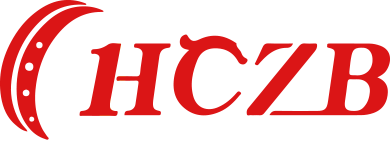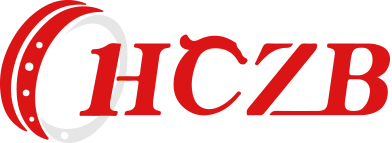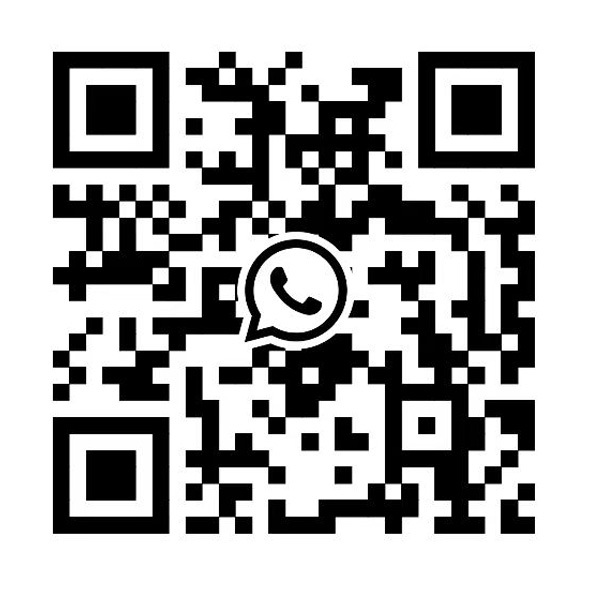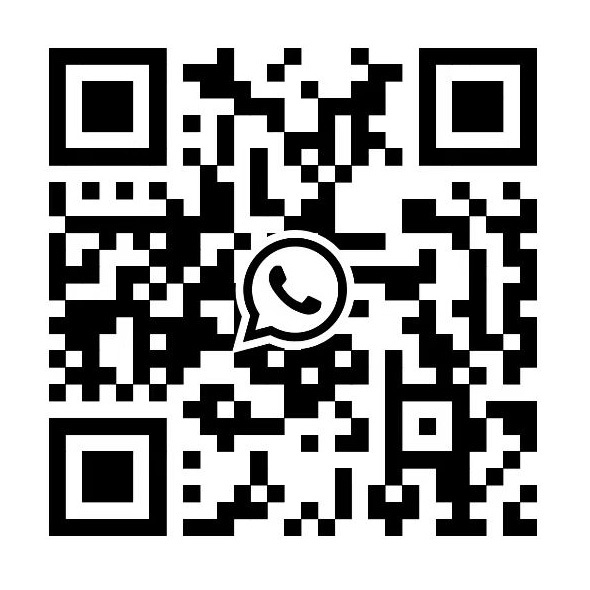



Self-aligning Ball Bearing
Payment Terms:
T/T
100% L/C
Cash
Western Union
Delivery Time:
30 Days
Keywords:
Series:
Product Details
Self-aligning Ball Bearing
The raceway surface of the outer ring of the self-aligning ball bearing is a spherical surface, and its center of curvature is consistent with the center of the bearing. Therefore, the inner ring, outer ring, ball, and cage can be tilted to a certain extent, and they can rotate freely around the center of the bearing, and have automatic centering performance, which can automatically adjust the axis center deviation of the shaft and the box due to improper processing and installation. It is suitable for occasions where it is difficult to align the shaft and the box, and the shaft is prone to deflection.
Self-aligning ball bearings are mainly used to bear radial loads. While bearing radial loads, they can also bear a small amount of axial loads. They are not suitable for bearing pure axial loads. Due to the self-aligning ability of this bearing, it is suitable for occasions with low speed and centering requirements. If the bearing capacity of the self-aligning ball bearing is not enough, the self-aligning roller bearing with the same self-aligning performance should be used.
Self-aligning ball bearing application range: woodworking machinery, textile machinery transmission shaft.
The inner diameter of the self-aligning ball bearing has a cylindrical bore or a tapered bore. The taper of the conical inner hole is 1:12 (the rear code is K). C&U can provide self-aligning ball bearings with cylindrical bore or tapered bore on the inner diameter surface.
C&U can provide self-aligning ball bearings with seals. Both sides of the self-aligning ball bearings have contact sealing rings, and the sealing lips contact the smooth bevels of the inner ring with light pressure. If necessary, please consult the technology center of C&U Group.
Self-aligning ball bearings with extended inner ring and special bore tolerances simplify mounting and dismounting. If necessary, please consult the technology center of C&U Group.
1. Structural form
1. Ordinary type (Fig. 1): self-aligning ball bearing with cylindrical inner diameter surface;
2. Conical hole type (Fig. 2): self-aligning ball bearing with a taper on the inner diameter surface, the taper is 1:12;
3. Sealed type (Figure 3): Self-aligning ball bearings with sealing rings on both sides;
4. Wide inner ring type (Fig. 4): self-aligning ball bearing with extended inner ring.

2. Dimensional accuracy and rotation accuracy
Tolerances for radial bearings (except tapered roller bearings)
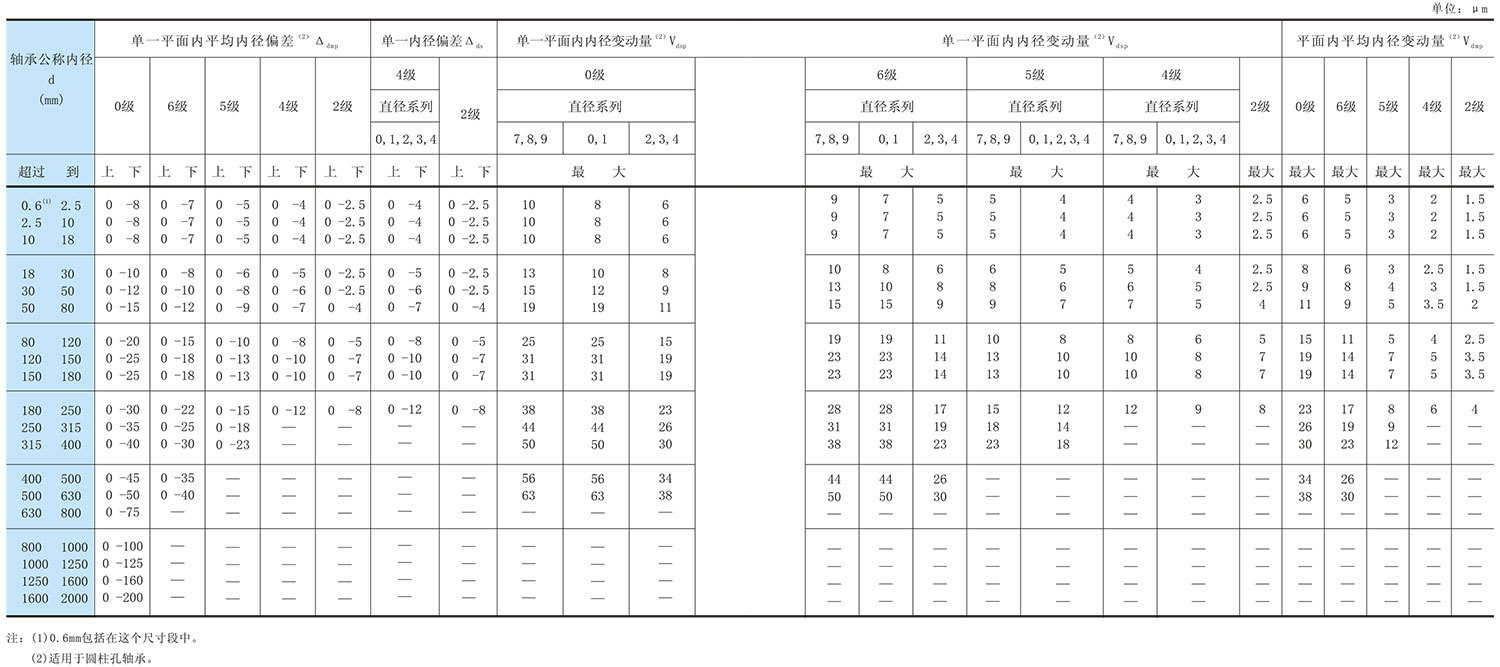
3. Radial clearance
C&U standard self-aligning ball bearings with cylindrical bore adopt common group clearance, and self-aligning ball bearings with conical inner holes use C3 group clearance as the standard type. Self-aligning ball bearings with a clearance larger or smaller than the standard group can be provided according to user requirements. The clearance of self-aligning ball bearings with extended inner ring is between group C2 and ordinary group.
See Table 6.11 for radial clearance values of self-aligning ball bearings with cylindrical bores, and Table 6.12 for radial clearance values of self-aligning ball bearings with tapered bores. These data are the clearance values when the bearing is not loaded before installation.
Table 6.11 Radial clearance of self-aligning ball bearings (cylindrical bore)
|
Bearing Nominal Inner Diameter |
Clearance(μm) |
||||||||||
|
2 set |
0 set |
3 set |
4 set |
5 set |
|||||||
|
Exceed |
Arrive |
The smallest |
Maximum |
The smallest |
Maximum |
The smallest |
Maximum |
The smallest |
Maximum |
The smallest |
Maximum |
|
2.5 |
6 |
1 |
8 |
5 |
15 |
10 |
20 |
15 |
25 |
21 |
33 |
Table 6.12 Radial clearance of self-aligning ball bearings (tapered bore)
|
Bearing Nominal Inner Diameter |
Clearance(μm) |
||||||||||
|
2 set |
0 set |
3 set |
4 set |
5 set |
|||||||
|
Exceed |
Arrive |
The smallest |
Maximum |
The smallest |
Maximum |
The smallest |
Maximum |
The smallest |
Maximum |
The smallest |
Maximum |
|
2.5 |
6 |
— |
— |
— |
— |
— |
— |
— |
— |
— |
— |
4. Cage
The cage of the self-aligning ball bearing generally adopts a stamped steel cage, and a glass fiber reinforced nylon cage can also be used. If you need self-aligning ball bearings with nylon cages, please consult the technical center of Renben Group.
5. Allowable alignment angle
The internal structure design of the self-aligning ball bearing enables it to have an automatic self-aligning function, that is, the bearing itself can adjust the angular alignment error between the inner and outer rings. Under normal load and working conditions, when the inner ring rotates, the non-concentric angle values given in the table below are allowed. Whether this given value can be fully achieved depends on conditions such as the design of the bearing arrangement and the type of seal.
|
Bearing series |
Allowable non-concentric angle value |
|
1200 series |
2.5° |
|
1300 series |
3° |
|
2200 series |
2.5° |
|
2300 series |
3° |
6. Equivalent dynamic load
Fₐ/Fᵣ<e 时 P=Fᵣ+Y₁Fₐ
Fₐ/Fᵣ>e时 P=0.65Fᵣ+Y₂Fₐ
The corresponding calculation factors e, Y₁, Y₂ for each bearing can be found in the dimension tables.
7. Equivalent static load
P₀=Fᵣ+Y₀Fₐ
The Y₀ factor values for each bearing are given in the dimension tables.
Self-aligning Ball Bearing

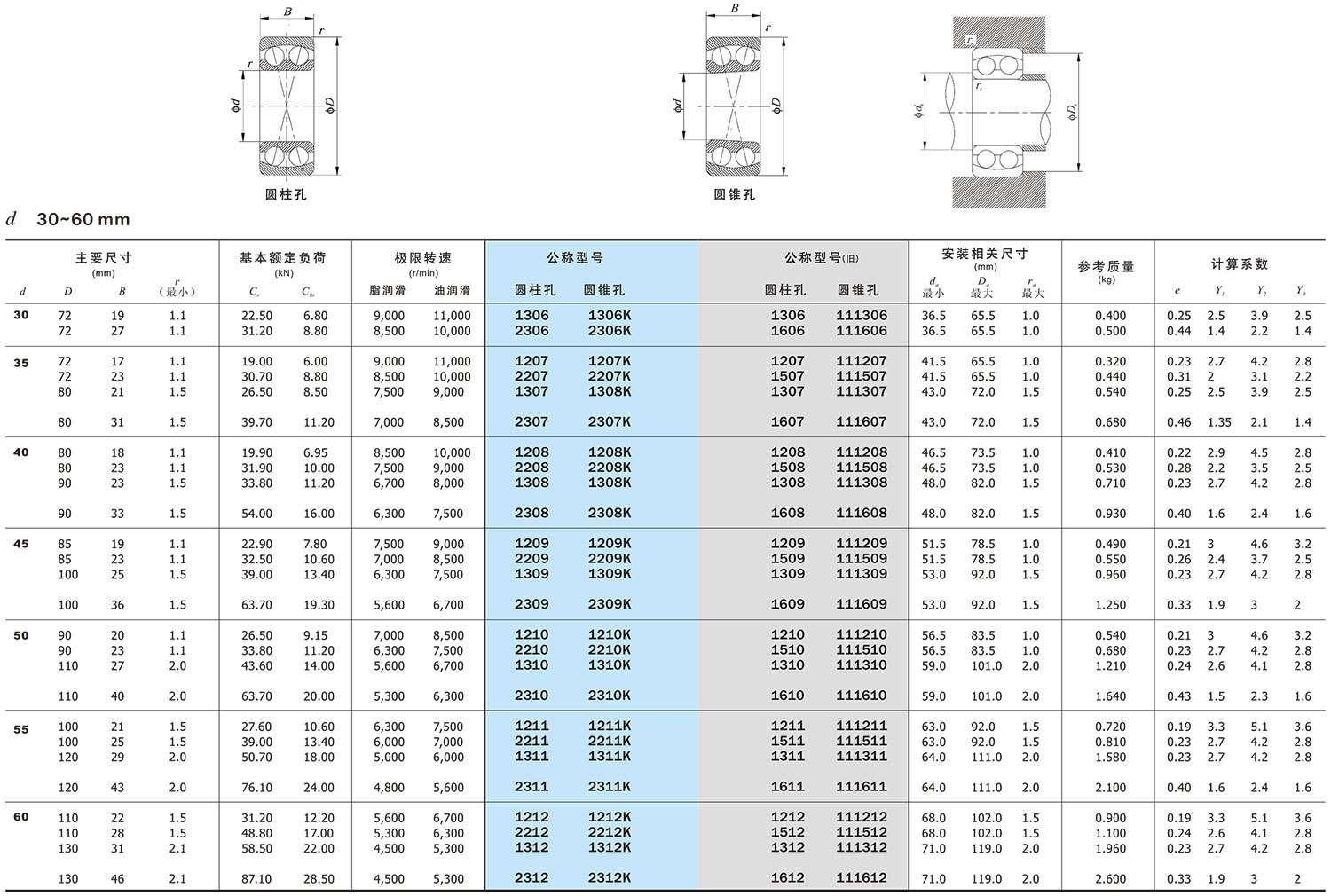
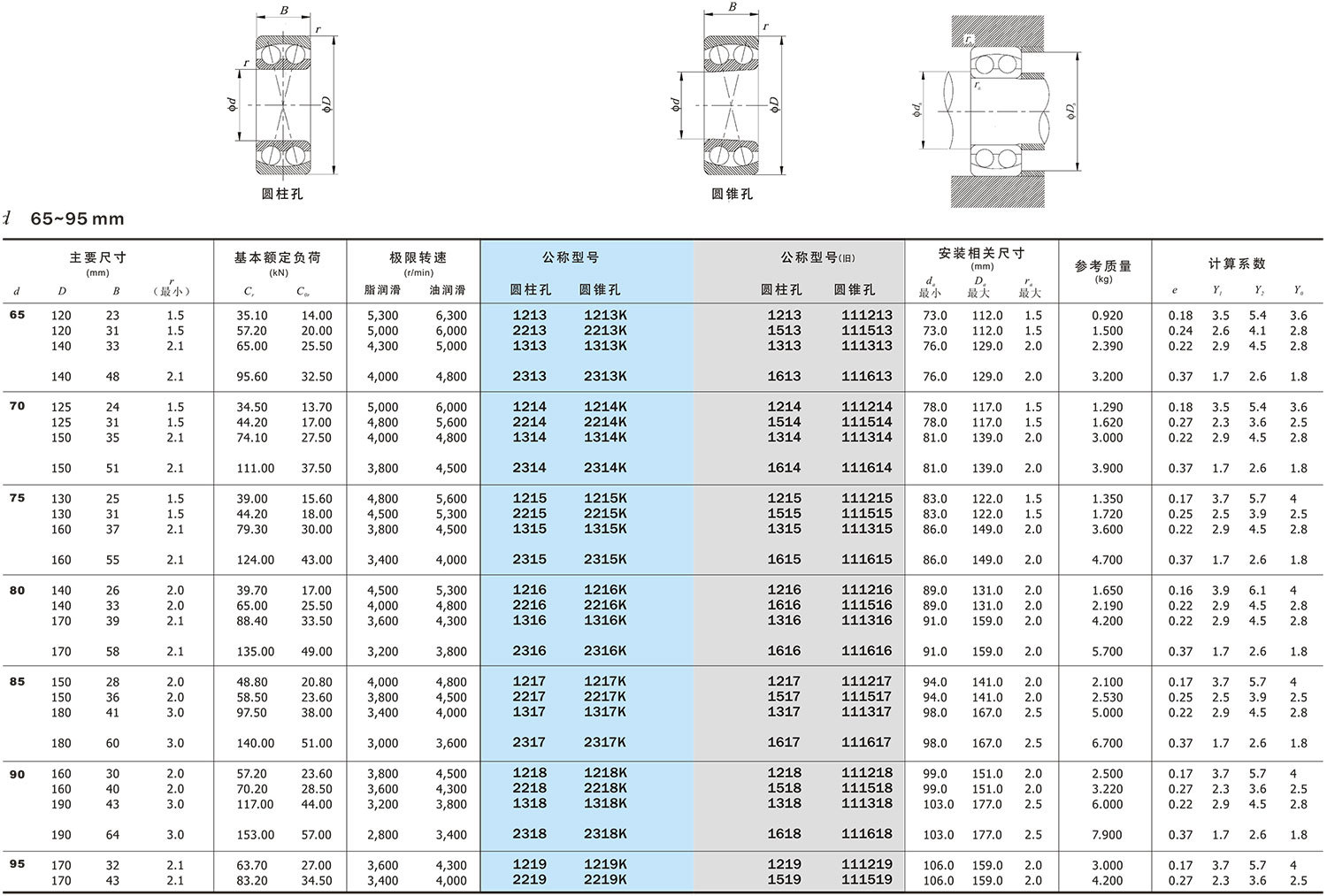
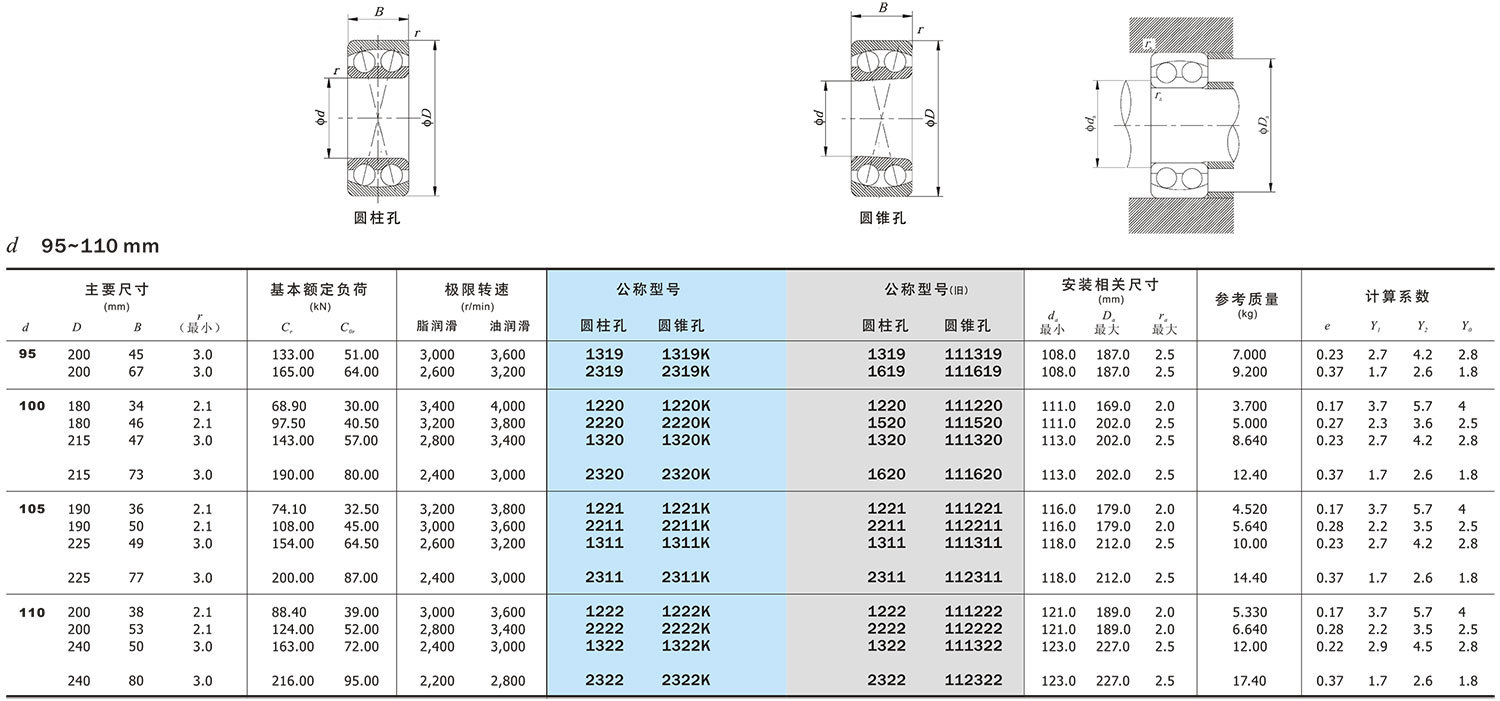
Type
Inside Diameter(mm)
Outside Diameter(mm)
Breadth(mm)
Weight(g)
Dynamic Load(N)
Static Load(N)
Supply From Stock
-
-
-
-
-
-
-
-
Factory





FAQ
Q
Are you a manufacturer?
A
Yes, we are a strong manufacturer.
Q
Can we visit your factory?
A
Of course, welcome to our factory for on-site inspection.
Q
Can we order samples?
A
Yes, we support customization.
Q
Can you arrange shipment? What are the physical methods?
A
Yes Can be arranged by sea shipping.
Q
What is your lead time?
A
Within 30 days after we confirm your request .
Q
What payment methods do you support?
A
T/T, 100% L/C at sight, Cash, Western Union are all accepted if you have other payment,please contact me.
Get a Free Quote
Series of Products
